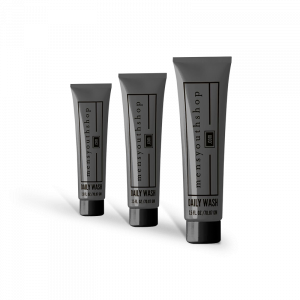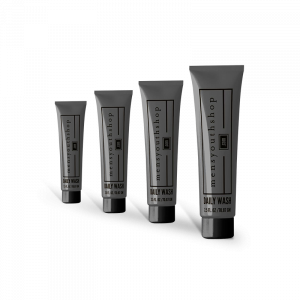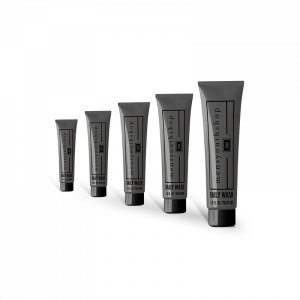
The skin is the outer reflection of your inner health. Moist, clear, glowing skin is a sign of good diet, while dry, pale, scaly or oily skin may result when diet is not up to par. Fortunately, the eating habits that work best for staying healthy are also the next best thing to a fountain of youth for our skin.
Skin Tonics
Just about every nutrient has a role in maintaining healthy skin. Vitamin C helps build collagen, the “scaffolding” between the tissues of our body. Poor intake of this vitamin can cause bruising, loss of skin strength and elasticity, and poor healing of cuts and scrapes. Just one daily glass of orange juice or a bowl of strawberries supplies all the vitamin C you need. Healthy skin also needs the B vitamins found in whole grains, milk and wheat germ to help speed wound healing and prevent dry, flaky or oily skin. Vitamin A in dark orange or green vegetables and fruits, egg yokes, and liver, maintains epithelial tissues such as skin, thus helping to prevent premature wrinkling or bumpy, sandpaper-like skin. Vitamin D in milk might help curb symptoms of psoriasis. Zinc in meat, seafood, and legumes aids in the healing of cuts and scrapes. Water keeps the skin moist and regulates normal function of the oil glands. The list of nutrients that benefit the skin is almost endless.
Continue Reading Below
you might like
Good Oxygen Supply
Your skin needs a constant supply of water and oxygen. But that doesn’t mean standing in the air and taking a shower. Rather, these nutrients need to be supplied through blood. A healthy blood supply provides other nutrients as well and removes waste products. It takes an ample amount of many nutrients to build and maintain healthy red blood cells and other blood factors. Those nutrients include protein, iron and copper, plus folic acid, other B vitamins, and vitamins C and E. A deficiency of any of these, especially iron, reduces the oxygen-carrying capacity of the blood, suffocating the skin and leaving it pale and drawn.
Fats for the Skin
Some nutrients directly affect the health of your skin. Repairing damaged skin requires protein, zinc, and vitamins A, C, and K. Linoleic acid is a fat in vegetable oils that helps restore damaged skin and maintain smooth, moist skin. On the other hand, a high-fat diet might increase the risk for developing skin cancer. Despite these seemingly contradictory findings, the solution is simple: Consume an overall low-fat diet and follow the guidelines below.
Antioxidants: Anti-Aging and Anti-Cancer
Much of the so-called aging of the skin is really a result of long-term exposure to sun, tobacco smoke, and ozone. Environmental pollutants generate highly damaging oxygen fragments, called free radicals, that erode skin much like water rusts metal. Free radicals also damage collagen, the protein latticework that maintains the skin’s firmness and suppleness. The result is a condition called photoaging, which includes dryness, loss of elasticity, and the appearance of fine lines and wrinkles.
Free radicals generated by sun exposure also damage the genetic structure of skin cells, which contributes to the development of cancer. Antioxidant nutrients, including vitamins C and E and beta carotene, show promise in slowing the rate of free-radical damage to the skin. People who consume five or more antioxidant-rich foods — spinach, sweet potatoes, tomatoes, cantaloupe, grapefruit, carrots — stockpile these health-enhancing nutrients in their tissues and develop fewer skin cancers. Of course, the antioxidants are effective only if you combine this healthful diet with other risk-control habits, such as using sunscreen lotions.
More-Than-Skin-Deep Guidelines
The dietary guidelines for healthy, youthful skin are simple. Consume minimally processed foods daily — including fresh fruits and vegetables, whole grain breads and cereals, and cooked dried beans and peas, with two to three servings of nonfat milk and a small amount of extra-lean meat or fish. Include several servings daily of antioxidant-rich foods, such as oranges for vitamin C, dark green leafy vegetables and apricots for beta carotene, and wheat germ for vitamin E. Include one linoleic acid-rich food in your daily diet, such as safflower oil, nuts, avocado, or seeds. Drink 6 to 8 glasses of water daily. Avoid repeated bouts of weight loss and regain, since weight cycling can result in premature sagging, stretch marks, and wrinkling. Take a moderate-dose vitamin and mineral supplement. When outdoors, wear a hat, use sunscreen, and apply one of the new antioxidant-rich creams that contain vitamin E and C.
by Gary D. Vogin, MD
 The Basic
The Basic
 The Complete
The Complete
 The Ultimate
The Ultimate
©2021 Mens Youth Shop